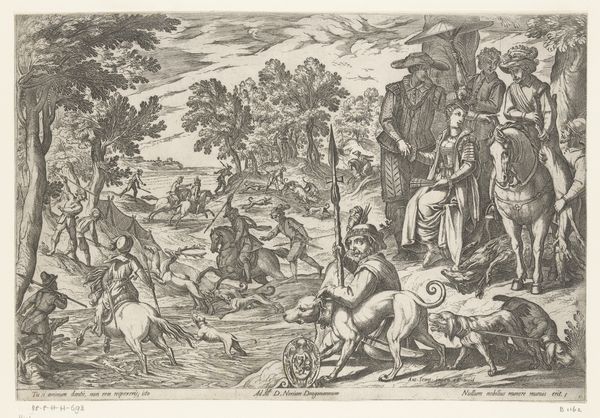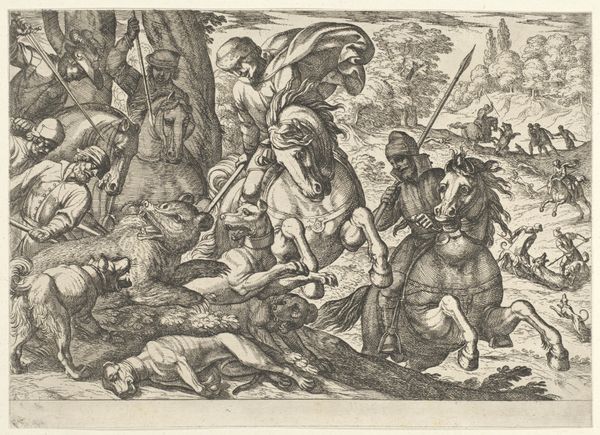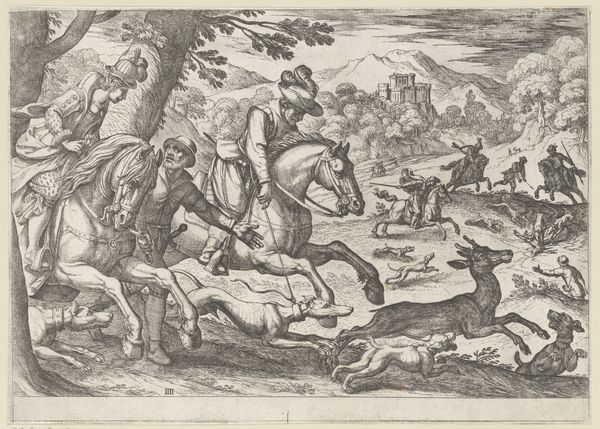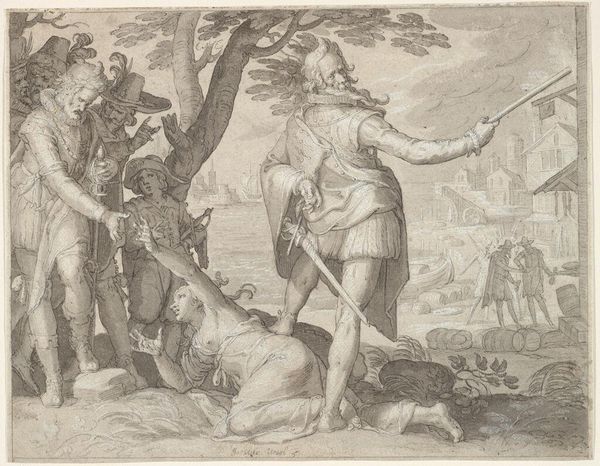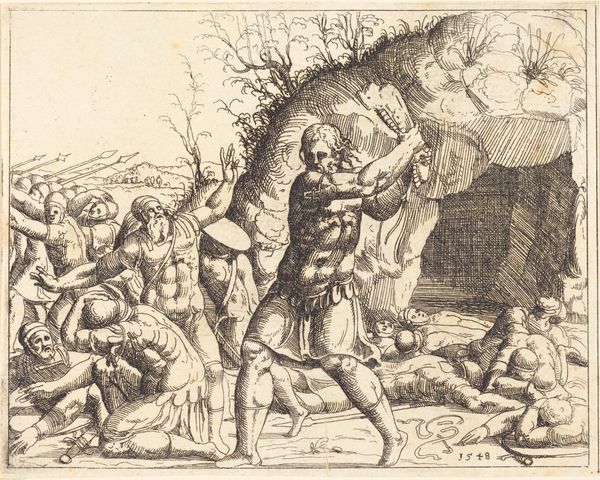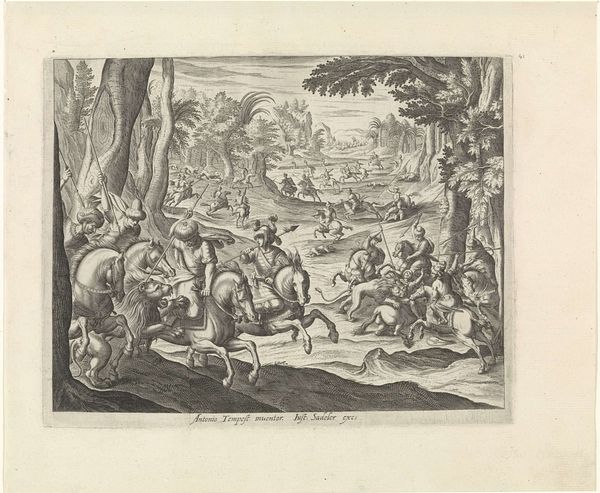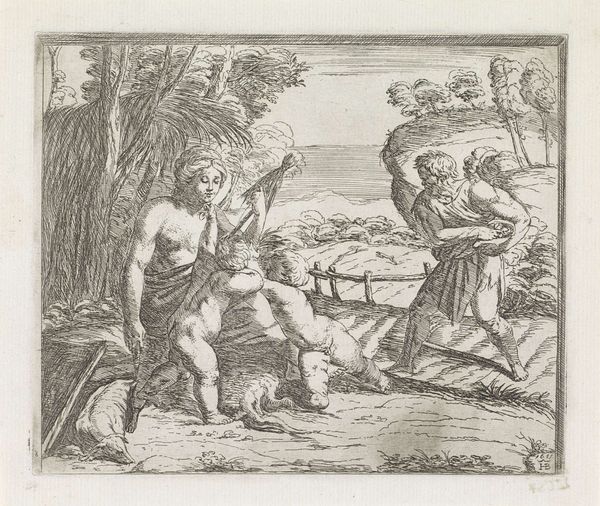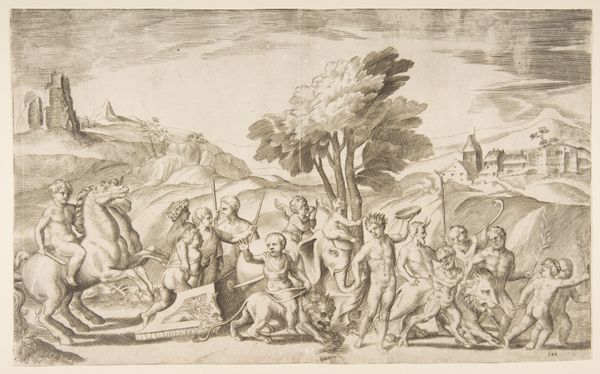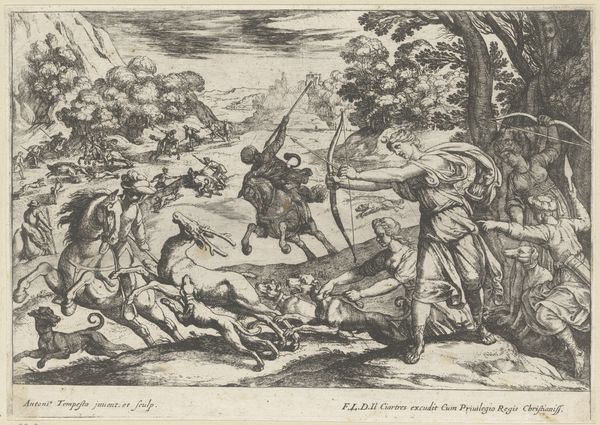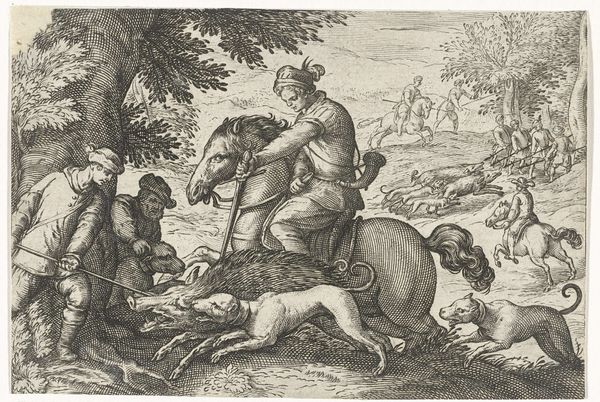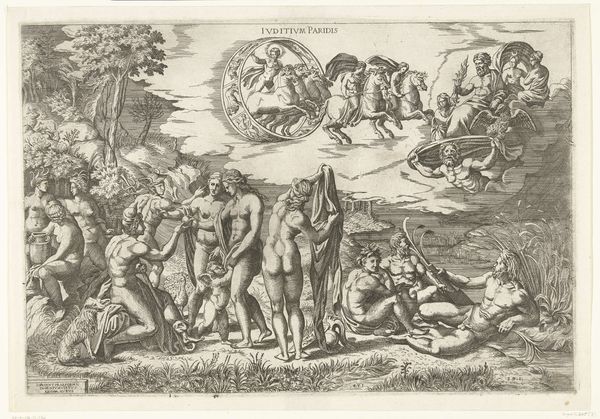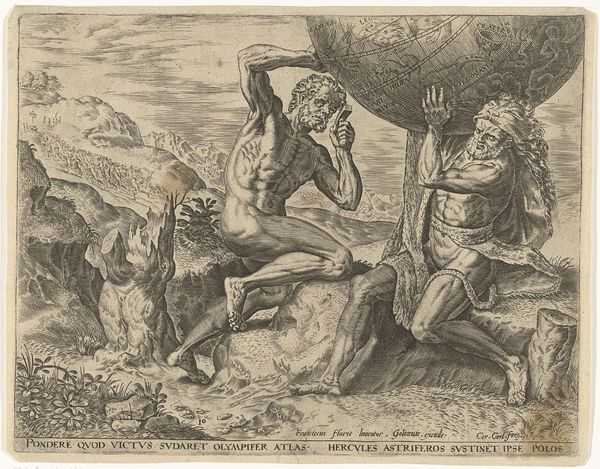
engraving
#
allegory
#
baroque
#
pen sketch
#
pencil sketch
#
charcoal drawing
#
figuration
#
pencil drawing
#
history-painting
#
engraving
Dimensions: height 358 mm, width 514 mm
Copyright: Rijks Museum: Open Domain
Editor: This is "Diana en Callisto" by Nicaise de Ruyter, made in 1688. It’s an engraving filled with figures in a lush landscape. It has a secretive, almost voyeuristic mood to it. What do you see in this piece, especially considering its historical context? Curator: Well, immediately, I’m struck by the power dynamics at play, particularly when we consider the social context of the late 17th century. It presents a mythological scene, but consider the gaze implied here, the male gaze, really, which was prevalent in the art world, where women artists faced significant institutional barriers. Do you think that the "voyeuristic mood" could serve as social commentary on women? Editor: I hadn't thought of it that way! I was focusing on the figures, but maybe the artist is critiquing this kind of… exploitation by presenting the scene itself. But would such subtle critique be obvious? Curator: It is very subtle. But we must consider what such imagery did, and for whom. These images circulate within particular social networks. What happens when access is limited by gender, class, and race? Engravings are often created for larger consumption so the purpose may also to have a commercial goal. This leads to our questioning the societal context for which these images are made. It makes me wonder who has agency here. Editor: It's like the image is simultaneously celebrating and maybe subtly undermining the male perspective? Curator: Precisely. It highlights the complexity of visual representation in a patriarchal society. These weren't neutral images. It reveals the complicated political implications of what, and who, is represented and circulated in such art. Editor: I never really considered that engravings also had a social and political life beyond their surface depiction. That's a lot to think about. Curator: Absolutely. Examining art through this lens, understanding how images operate within institutional structures and power dynamics, offers a much richer understanding. Hopefully, this dialogue is the starting point for just that type of thought.
Comments
No comments
Be the first to comment and join the conversation on the ultimate creative platform.
